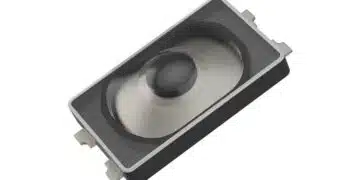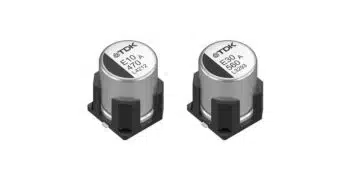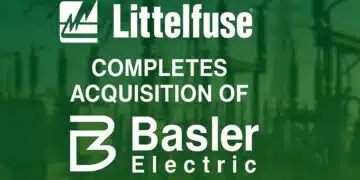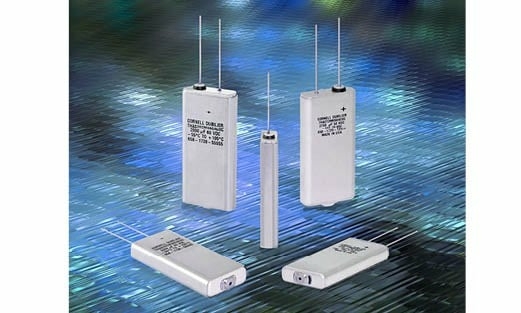source: Cornell Dubiler news
Cornell Dubilier Electronics, Inc. (CDE) has announced a significant new development in aluminum electrolytic technology. Its 85 ºC THA Series Thinpack capacitors are only 8.2mm thick, and 9mm for the 105 ºC THAS Series. This is comparable in height to V-chip electrolytics, tantalums and board-mounted axials, yet offer much higher bulk-storage energy density. A single THA/THAS capacitor can replace an array of SMT, axial or radial aluminum electrolytic or solid tantalum capacitance arrays. That substitution can allow engineers to design smaller products with simplified assembly and higher reliability.
The THA/THAS Series design is radically new, yet based on CDE’s 20+ years of experience with MIL-grade flat electrolytics. Reengineered to be thinner and more cost effective, it is a good fit for many of today’s high-performance electronics. Unlike traditional cylindrical electrolytics, a THA/THAS capacitor has a sealed, laser welded aluminum case that eliminates the need for space wasting end seal gaskets. The design includes a valve to vent hydrogen gas, reducing swelling by relieving internal pressure.
In most applications, there are significant cost, weight and space savings vs. a comparably rated bank of SMT or axial aluminum electrolytic capacitors. This includes requiring about 70% less board space than alternatives, resulting in a reduction of overall size and weight of the finished board. The use of a single component versus many and fewer connections improves overall circuit reliability. The THA is rated at 3,000 hr. life @ 85 ºC; and the THAS is rated at 3,000 hr. life @ 105 ºC. Values from 140 µF @ 450 Vdc to 18,000 µF @ 10 Vdc, with 72 capacitance/voltage combinations are available for each series.
Potential applications include any circuits that require high capacitance bulk storage and filtering in a low-height profile. This includes: tablets, laptops, instrumentation, commercial-grade LED driver modules, compact power supplies, drones and RPVs, set-top boxes, 1U rack-mounted devices, solid state drives and other thin, high-performance devices.






























